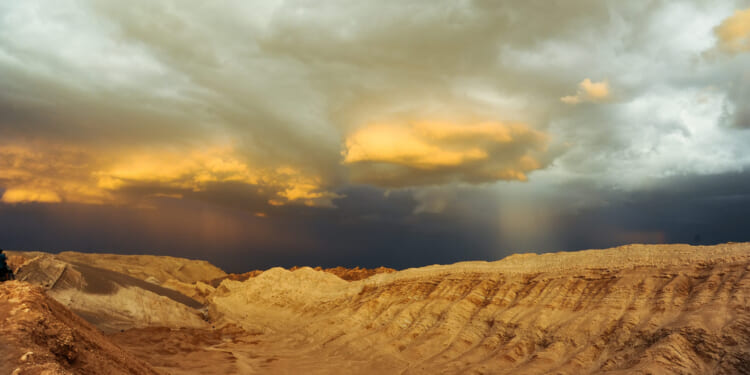China tightened its rare-earth export controls, expanding on the controls it announced in April. According to the Center for Strategic and International Studies, foreign firms will now be required to obtain Chinese government approval to export products that contain even trace amounts of Chinese-origin rare-earth materials — or that were produced using Chinese mining, processing, or magnet-making technologies. Products made with certain technologies from China are also subject to the export controls. The restrictions apply to products manufactured outside of China. Overseas defense users will not be granted licenses, and applications related to advanced semiconductors or artificial intelligence development will be approved on a case-by-case basis. Most of the restrictions will take effect on December 1; some took effect with the announcement.
According to CNBC, China now requires foreign entities to obtain a license to export any products containing more than 0.1% domestically sourced rare earths or made using Chinese extraction, refining, magnet-making, or recycling technology. The new rules aim to prevent the “misuse” of rare-earth minerals in military and other sensitive applications. Companies linked to foreign militaries or listed under export-control or watch programs will be denied permits, and applications involving potential use in weapons, terrorism, or other military activities will also be rejected. Certain exemptions will apply, such as exports for emergency medical needs or disaster relief. Violators could face severe penalties, including loss of export privileges and legal prosecution.
China is the world’s leader in the processing of rare earths and in rare-earth technology. In 2024, China controlled over 69% of rare earth mine production and nearly half of the world’s reserves, according to the U.S. Geological Survey. China produces over 90% of the world’s processed rare earths and rare-earth magnets. Rare earths require extensive processing, which China is able to do with its massive coal fleet and inexpensive power. Via Reuters, the rare earth group of 17 elements are used in products from electric vehicles to aircraft engines and military radars. This is not the first time that China has imposed export restrictions on rare-earth technologies. In 2010, for example, China cut its rare-earth exports by 40% and cut off supplies to Japan over a territorial dispute, causing prices to soar.
As reported by CNBC, tightened access to rare earths earlier this year disrupted international supply chains. The auto industry was particularly affected by restrictions on rare-earth magnets. While China’s official data showed that those exports have recovered, progress appears uneven. According to the European Chamber of Commerce, one member incurred costs of “millions of euros” while other members cited inconsistent procedures for obtaining export approvals. As of September 9, only 19 out of 141 applicants for rare-earth exports sampled (13.5%) had received approval from China’s Ministry of Commerce.
According to UPI News, prior to this announcement from China, U.S. lawmakers called for more stringent restrictions on the export of chipmaking equipment after finding that U.S. and allied-nation companies have made tens of billions of dollars from selling semiconductor-related equipment to China’s state-owned and military-linked companies.
U.S. Rare Earth Production
From 1940 to 1990, the United States produced and mined its own rare-earth minerals at the Mountain Pass mine in California. Until the 1980s, the United States was one of the world’s largest producers, but it was usurped by China due to its substantial deposits, cheap labor, and lax environmental standards. The mine had closed in the fourth quarter of 2015 due to China’s competitive prices, opposition from environmentalists, and U.S. environmental regulations escalating the cost of production, but returned to production in 2018 during President Trump’s first term. It was bought by MP Materials in 2017 from Molycorp, which had run it before it went bankrupt. Today, the Mountain Pass mine is the only U.S.-based facility producing rare earths.
The Mountain Pass mine, however, produces a small fraction compared to China’s production. President Trump, as part of his America First and Energy Dominance programs, is pursuing opening U.S. mines to produce critical minerals. Recently, he ordered the approval of a proposed 211-mile industrial road in Alaska to allow access to copper, cobalt, and rare-earth minerals such as gallium and germanium.
Analysis
Trade tensions and China’s increasingly restrictive rare-earth trade policy require the U.S. to create the conditions for developing mines domestically. One recent example of this is the opening of Ramaco’s Brook Mine in Wyoming. However, the initiative faces formidable challenges, including a cumbersome permitting process that can delay projects by a decade or more, as evidenced by Ramaco’s 17- to 18-year timeline from acquisition to production. China’s entrenched control over 90% of rare-earth elements and its ability to manipulate global market dynamics through pricing and supply restrictions further complicates U.S. efforts. Without comprehensive reforms to streamline permitting, the U.S. will lack a supply of critical minerals, undermining national security and economic competitiveness. The success of this endeavor hinges on sustained policy momentum and innovative strategies to overcome both domestic bureaucratic obstacles and global market challenges.
For inquiries, please contact [email protected].














